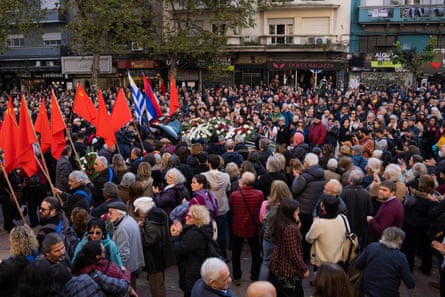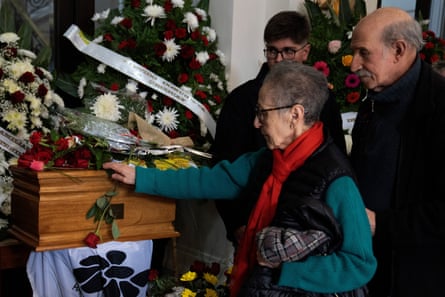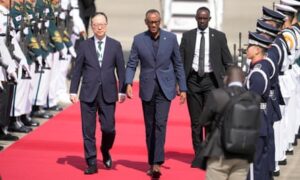A Uruguayan woman who was abducted by security forces during the country’s military dictatorship has received a proper burial, nearly 50 years after she was forcibly disappeared.
Bone fragments of Amelia Sanjurjo were exhumed exactly a year ago from a military base in a small southern town in Uruguay. She was finally identified last week after investigators took DNA samples from her maternal aunt and nephews in Uruguay, Spain and Italy in hopes of finding a match.
Sanjurjo, remembered by family and friends as a kind and patient employee at a publishing house and a member of Uruguay’s Communist party, was 41 years old and newly pregnant when she was seized on the streets of Montevideo on 2 November 1977. Prosecutors said that she died after being beaten and tortured at a military detention center six days after her arrest.
The identification of her remains was a rare success for forensic teams who have only recovered the remains of five other disappeared people in Uruguay since excavations began in 2005.

The vast majority of the nearly 200 people kidnapped and killed during the country’s dictatorship remain unidentified.
The search for bone fragments, teeth and shreds of clothing, investigators say, is the hardest part, given that members of the dictatorship deliberately destroyed remains in an effort to deny that detainees were tortured and killed.
“Each new identification is a joy. It’s a recognition of a great task that is carried out quietly by a whole group of professionals, archaeologists, anthropologists, geneticists, historians,” said Carlos Vullo, the genetic lab director of the Argentine Forensic Anthropology Team, which assisted with Sanjurjo’s identification.
In downtown Montevideo on Thursday, somber crowds thronged the small wooden box that held Sanjurjo’s remains outside Uruguay’s University of the Republic, home to the forensic investigators that identified her using genetic testing. Some hugged. Others wept.
Representatives for the relatives of Uruguay’s disappeared paid tribute to Sanjurjo’s late father and sister, who they said devoted their lives to searching for Sanjurjo and died without getting answers.
“Today means we have found Amelia and are able to say goodbye to her, which was the right thing to do for many years,” said Ignacio Errandonea, a member of the group whose relatives were disappeared.
Sanjurjo’s surviving relatives, today scattered around Europe, sent a message to be read aloud at her wake, where supporters placed red and yellow roses on her coffin.

Mikaela Mall, a representative of the relatives, delivered a family statement, saying: “The dictatorship was cruel to her as it was to so many others, making her pay dearly for the simple and brave act of dreaming of a more just and supportive world … She dedicated her entire life to her activism and was consistent until the very end.”
The identification of victims is part of a broader effort to deliver justice and accountability 40 years after the end of the dictatorship in Uruguay, a traumatic chapter of history as violent authoritarian rule swept through South America. From 1973 to 1985, Uruguay’s military unleashed a campaign of repression after having largely defeated a guerrilla uprising, disappearing 197 people, according to the government’s count.
An untold number of Uruguayans abducted by the military dictatorship ended up detained in Argentina as a result of Operation Condor, a secret plan carried out by several South American dictatorships to eliminate their leftwing opponents. Forensic teams have so far identified 31 disappeared Uruguayans based on remains recovered elsewhere in the region, including Argentina’s clandestine detention centers.
Argentina’s reckoning with its particularly brutal past has been far more extensive than that of Uruguay and other neighboring countries. After the return of civilian rule in Uruguay, the government enacted an amnesty covering the crimes of the dictators as well as their guerrilla opponents, delaying the judicial process.
In Argentina, where human rights groups estimate 30,000 people were forcibly disappeared, courts have handed down more than 300 verdicts and delivered sentences to thousands of military officials over dictatorship-era crimes. In Uruguay, fewer than than 30 trials have occurred.
Recent legal changes seek to speed the justice process along. The Uruguayan president, Luis Lacalle Pou, said Sanjurjo’s identification shows “the government’s commitment to the search for the disappeared”.
Source: theguardian.com


















